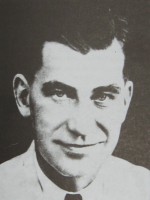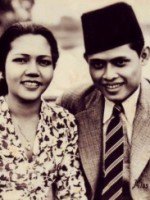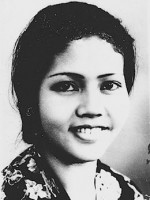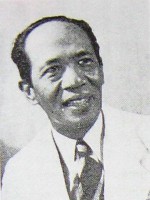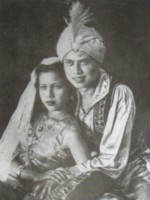Albert Balink is a Director, Scriptwriter and Producer Néerlandais born on 3 august 1906
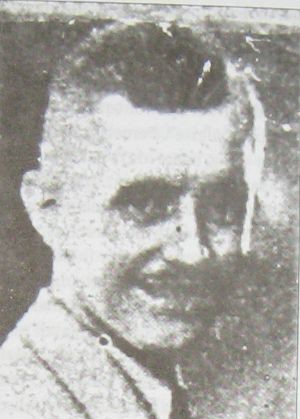
Albert Henrica Everardus Catherina ('Albert') Balink (3 August 1906 – 1 February 1976) was a Dutch-Indonesian journalist and filmmaker who made important contributions to the Indonesian cinema in the 1930s. Born in the Netherlands, he made his start in the Dutch East Indies as a journalist writing extensively on film. Having learned filmmaking from books, in the mid-1930s he released a documentary and two feature films. In 1938 he immigrated to the United States and married, founding and becoming the editor of The Knickerbocker. His two feature films, Pareh (1936) and Terang Boelan (1937), have been considered the most important films from the Dutch East Indies of the 1930s.
With the Wong brothers, Balink started the Java Pacific Film production company in 1934, in what was then the Dutch East Indies. At the time Balink was inexperienced with film, having only book knowledge. Java Pacific Film, which was headquartered in an old tapioca flour factory, first produced the documentary film De Merapi Dreigt (Mount Merapi Looms), in 1934. Advertised as the first documentary film with sound in the Dutch East Indies, it was a critical success. However, Balink's main interest was in feature films. All feature films released in the Dutch East Indies between 1934 and 1935 had been directed by The Teng Chun, based on Chinese mythology or martial arts, and targeted at low-class audiences, generally ethnic Chinese. Balink intended to reach an upper-class audience.
The studio, working with Mannus Franken, then produced Pareh (Rice; 1936), an ethnographic film considered a forerunner for the "Indonesia Indah" films. Balink had brought Franken to the country to ensure its artistic quality and worked to secure funding from various sponsors; he also spent more than a year scouring the country to cast the film, as he had already decided what the characters would be like. However, the film, which had cost 75,000 gulden to produce, was a flop and bankrupted the company, including Balink, despite being well received in the Netherlands.
Balink then found financial backing to establish the Dutch Indies Film Syndicate (Algemeen Nederlandsch Indisch Filmsyndicaat, or ANIF), which produced its first newsreel on 22 December 1936; this reel showed the Gambir Market, festivities at the governor-general's palace, and the inauguration of Tjarda van Starkenborgh Stachouwer.
In 1937, Balink directed Terang Boelan (Full Moon), "often described as the first full-length Indonesian film in Malay". The story, following a young couple who have not received their parents' blessings, was written by the reporter Saeroen. Terang Boelan proved to be the most commercially successful local production until 1953's Krisis (Crisis), released after Indonesia had become independent. However, the studio's backers disapproved of Balink's interest in feature films, leading to him leaving the Indies to unsuccessfully try and become a Hollywood director. In 1991 the American visual anthropologist Karl G. Heider wrote that Pareh and Terang Boelan were the two most important cinematic works from the Dutch East Indies during the 1930s.
In March 1938 Balink immigrated to the United States, became a citizen, and worked as a correspondent for de Volkskrant. The 1940 United States Census indicates him living in Queens, New York, with his wife Lydia, a woman from New Jersey 12 years his junior; Lydia worked with him as a secretary. In 1948, he published a socioeconomic study of the Caribbean, My Paradise is Hell. In the 1950s he was editor of the magazine The Knickerbocker, a publication for Dutch Americans which he had established. With the magazine he helped the baseball player Han Urbanus train with the New York Giants and chaired the William the Silent Award Committee. Balink died in the United States on 1 February 1976.
Source : Wikidata
Albert Balink

- Infos
- Photos
- Best films
- Family
- Characters
- Awards
Biography
Balink, of Dutch-Indonesian descent, was born on 3 August 1906; the 1940 United States Census indicates his place of birth as the Netherlands (written "Holland"). In the early 1920s and 1930s Balink was a reporter with De Locomotief, a newspaper based in Semarang, as well as the Soematra Post based out of Medan. Among his main interests as a journalist while with these papers was film.With the Wong brothers, Balink started the Java Pacific Film production company in 1934, in what was then the Dutch East Indies. At the time Balink was inexperienced with film, having only book knowledge. Java Pacific Film, which was headquartered in an old tapioca flour factory, first produced the documentary film De Merapi Dreigt (Mount Merapi Looms), in 1934. Advertised as the first documentary film with sound in the Dutch East Indies, it was a critical success. However, Balink's main interest was in feature films. All feature films released in the Dutch East Indies between 1934 and 1935 had been directed by The Teng Chun, based on Chinese mythology or martial arts, and targeted at low-class audiences, generally ethnic Chinese. Balink intended to reach an upper-class audience.
The studio, working with Mannus Franken, then produced Pareh (Rice; 1936), an ethnographic film considered a forerunner for the "Indonesia Indah" films. Balink had brought Franken to the country to ensure its artistic quality and worked to secure funding from various sponsors; he also spent more than a year scouring the country to cast the film, as he had already decided what the characters would be like. However, the film, which had cost 75,000 gulden to produce, was a flop and bankrupted the company, including Balink, despite being well received in the Netherlands.
Balink then found financial backing to establish the Dutch Indies Film Syndicate (Algemeen Nederlandsch Indisch Filmsyndicaat, or ANIF), which produced its first newsreel on 22 December 1936; this reel showed the Gambir Market, festivities at the governor-general's palace, and the inauguration of Tjarda van Starkenborgh Stachouwer.
In 1937, Balink directed Terang Boelan (Full Moon), "often described as the first full-length Indonesian film in Malay". The story, following a young couple who have not received their parents' blessings, was written by the reporter Saeroen. Terang Boelan proved to be the most commercially successful local production until 1953's Krisis (Crisis), released after Indonesia had become independent. However, the studio's backers disapproved of Balink's interest in feature films, leading to him leaving the Indies to unsuccessfully try and become a Hollywood director. In 1991 the American visual anthropologist Karl G. Heider wrote that Pareh and Terang Boelan were the two most important cinematic works from the Dutch East Indies during the 1930s.
In March 1938 Balink immigrated to the United States, became a citizen, and worked as a correspondent for de Volkskrant. The 1940 United States Census indicates him living in Queens, New York, with his wife Lydia, a woman from New Jersey 12 years his junior; Lydia worked with him as a secretary. In 1948, he published a socioeconomic study of the Caribbean, My Paradise is Hell. In the 1950s he was editor of the magazine The Knickerbocker, a publication for Dutch Americans which he had established. With the magazine he helped the baseball player Han Urbanus train with the New York Giants and chaired the William the Silent Award Committee. Balink died in the United States on 1 February 1976.
Usually with
Filmography of Albert Balink (2 films)
Director
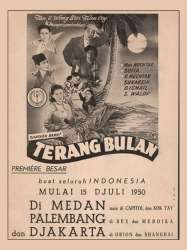
Terang Bulan (1937)
Directed by Albert Balink
Genres Drama
Actors Rd Mochtar, Roekiah, Kartolo, Dhalia
Rohaya (Roekiah) must separate from her lover, Kasim (Rd Mochtar), so that she can marry her father's choice, the disreputable but rich Musa (Eddie T. Effendi). The night before the wedding, Kasim plays the song "Terang Boelan" for Rohaya, and they agree to elope. The following day, Rohaya and Kasim escape from Sawoba Island to Malacca, where Kasim begins work at a drydock and Rohaya keeps busy as a housewife. They discover that Kasim's old friend, Dullah (Kartolo), has lived in Malacca for some time.
Scriptwriter
Producer

Pareh (1935)
, 1h32Directed by Albert Balink, Mannus Franken
Genres Drama
Actors Rd Mochtar
Roles Producer
 Connection
Connection
